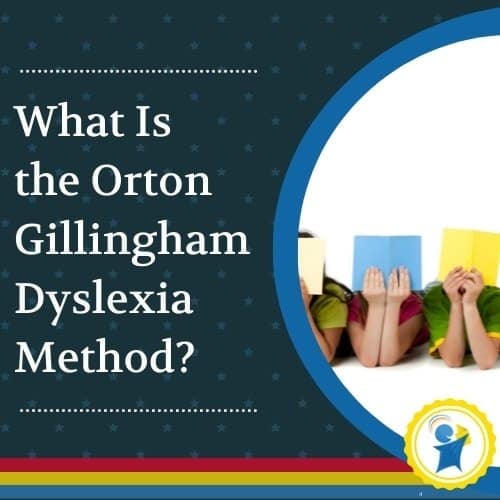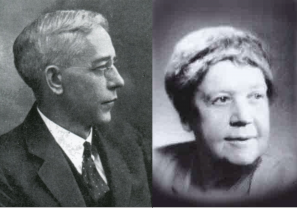
The Orton-Gillingham (OG) method is a direct, explicit, multisensory, highly structured, sequential, and diagnostic method intended to teach reading, spelling, and writing to struggling readers or students with dyslexia.
According to the Orton Gillingham Academy, OG is most properly understood and practiced as an approach, not a method, program, or system. In the hands of a well-trained teacher or tutor, it is a tool of exceptional breadth, depth, and flexibility.
History of the Orton-Gillingham approach
The Orton-Gillingham approach to teaching reading was developed by psychologist Anna Gillingham and is based on the theoretical work of the American neurologist Samuel Torrey Orton.
Orton cultivated an interest in dyslexic children and studied over 1,000 struggling readers. His observations persuaded him that children with dyslexia were especially prone to left-right confusion and reversals, such as mistaking b for d or was for saw.
Orton concluded that dyslexia was due to a failure to establish a left-right sense, which was, in turn, caused by incomplete cerebral dominance. Gillingham translated these theories into a highly structured reading method that stresses the repeated association of individual phonemes with their sound, name, and cursive formation.
The essence of the Orton-Gillingham approach
Orton-Gillingham is a systematic, sequential, synthetic, and phonics-based approach to teaching reading. Explicit instruction is provided in phonology and phonological awareness, sound-symbol correspondence, syllables, morphology, syntax, and semantics.
A key characteristic of the OG approach is that it is multisensory, involving the visual, auditory, and kinesthetic/tactile learning pathways. Instruction is provided incrementally and cumulatively, requires mastery and overlearning before students advance to new components, is based on ongoing diagnostic information and assessment, and is individualized to the needs of each student.

The Orton-Gillingham approach is one of several reading methods that emphasize the phonetic regularities of English in its instructional practices. Initially, individual letters are taught.
After mastering the individual sounds (a, b, h, i, j, k, m, p, t), the student is taught to blend them into simple consonant-vowel-consonant words (e.g., map, hit, Tim). Teaching then focuses on spelling the words in a structured format that requires repeating them, naming and simultaneously writing the letters, and reading the word after writing it.
The similarly structured introduction of subsequent single letters, blends (e.g., st, cl, tr), and other phonograms (e.g., sh, ea, tion) are meticulously sequenced. Later stages in the sequence include sentence and story writing, syllabication, dictionary skills, and advanced spelling rules.
OG key features in a nutshell
Programs vary, but these features are key to all Orton-Gillingham-based reading programs:

Explicit
Explicit teaching practices involve showing students what to do and how to do it. Orton–Gillingham helps struggling readers by explicitly teaching the connections between letters and sounds.

Multisensory
Multisensory learning is essentially the theory that most individuals learn best when using more than one sense. A multisensory approach involves the visual, auditory, and kinesthetic/tactile learning pathways.

Systematic
Systematic teaching means skills and concepts are taught in a planned, logically progressive sequence. For example, certain sounds — those that are easier to learn or used more often — are taught before other sounds.

Incremental
With incremental teaching, each lesson builds carefully upon the previous. Each step serves as a building block to learning the English language.

Cumulative
Two of the most important components of cumulative learning are mastery and constant and consistent review of previously taught skills and material.

Based on phonograms
Phono means sound, and graph means written symbol. Phonograms are the letter symbols that comprise a sound. Phonograms may be one letter or letter teams.

Individualized
Each student’s program gets tailored to suit their individual needs.
How effective is OG in teaching reading?
The existing literature provides both scientific evidence that supports, as well as evidence that fails to support, the effectiveness of Orton-Gillingham instruction in reading when compared to other reading instruction.
Research by Ritchey and Goeke
Ritchey and Goeke (2006) reviewed 12 studies that included elementary students, adolescents, and college students.
Of the 12 studies,
- five reported that the Orton-Gillingham instruction was more effective than comparison or control interventions for all measured outcomes,
- four reported that the Orton-Gillingham instruction was more effective for at least one (but not all) outcomes in comparison to other intervention(s),
- two reported that the alternate instruction was more effective than the OG instruction, and
- one reported no significant differences once covariates were included.
The largest effects were reported for word attack or nonword reading outcomes, with a mean effect size of .82, and comprehension outcomes, with a mean effect size of .76. Other mean effect sizes were in the small to medium range.
A meta-analysis by Stevens and team
Stevens et al. (2021) conducted a meta-analysis to examine the effects of Orton-Gillingham reading interventions on the reading outcomes of students with or at risk for word-level reading disabilities (WLRD).
The purpose of a meta-analysis is to systematically combine and analyze data from published research studies to better understand what that body of research says about a particular question.
The meta-analysis suggests that Orton-Gillingham reading interventions do not statistically significantly improve foundational skill outcomes (i.e., phonological awareness, phonics, fluency, spelling; effect size = 0.22; p = .40), although the mean effect size was positive in favor of Orton-Gillingham-based approaches. Similarly, there were no significant differences in vocabulary and comprehension outcomes (ES = 0.14; p = .59) for students with or at risk for WLRD.
Summary
Solari et al. (2021) summarize the results of these studies:
These findings are … consistent with published reports from the What Works Clearinghouse (WWC), an agency within the U.S. Department of Education that independently reviewed several studies of both branded and unbranded OG programs. The WWC found that the evidence in favor of OG programs is limited, either due to a mix of positive and negative effects or, more frequently, because available studies of such programs do not meet WWC quality standards.
Why use the Orton-Gillingham approach?
Edublox offers online, Orton-Gillingham-based tutoring to students based in the United States, Canada, Australia, and elsewhere.
If the literature is not conclusive regarding the Orton-Gillingham approach, why is Edublox using it to assist struggling readers and students with dyslexia?
Here’s why
It should be noted that Edublox is more than just another Orton-Gillingham method. Edublox started life as a cognitive training program that develops preparatory and foundational reading skills and not as a reading program.
In an attempt to complement our cognitive training program, we tried and tested many reading programs over a period of three decades — one-on-one, in small groups, and in the classroom. We have found the OG approach to be successful when combined with cognitive skills development. The combination is powerful in assisting students with dyslexia and related language-processing difficulties.
Watch our playlist of customer reviews and take the first step by booking a free consultation to discuss your child’s reading needs.
.
Authored by Susan du Plessis (B.A. Hons Psychology; B.D.), a reading specialist with 30+ years of experience in learning disabilities.

